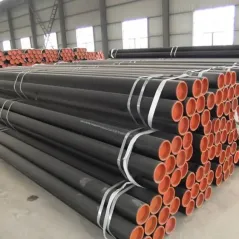-
Cangzhou Yulong Steel Co., Ltd.
-
Phone:
+86 13303177267 -
Email:
admin@ylsteelfittings.com

Nov . 12, 2024 19:25 Back to list
ansi b 16.1
Understanding ANSI B16.1 A Comprehensive Overview
The ANSI B16.1 standard, developed by the American National Standards Institute, is a crucial guideline for the design and manufacturing of cast iron pipe flanges and flanged fittings. This standard serves various industries, including waterworks, chemical processing, and oil and gas, ensuring that the components produced are reliable, efficient, and compatible across systems.
The Importance of ANSI B16.1 Standardization
Standardization in engineering and manufacturing is vital for safety, interoperability, and performance. ANSI B16.1 provides specifications that help ensure that flanges and fittings are not only compatible with each other but also meet necessary performance requirements. This standard covers various aspects of flange design, including dimensions, tolerances, materials, and pressure-temperature ratings.
Flanged joints are fundamental components in piping systems, frequently used to connect pipes to valves, pumps, and other equipment. The ANSI B16.1 standard is particularly applicable for cast iron flanges, making it pertinent for industries where cast iron piping systems are prevalent. Without such standards, inconsistency in flange design could lead to significant issues such as leaks, failures, and even catastrophic accidents.
Key Aspects of ANSI B16
.11. Flange Types ANSI B16.1 specifies different types of flanges, such as raised face, flat face, and ring-type joint flanges. Each type serves distinct functions and applications, which is critical in selecting the appropriate flange for a specific project.
2. Dimensions and Tolerances The standard outlines the dimensions of flanges, including bolt holes, thickness, and outer diameter. It also specifies tolerances, which are essential for ensuring a proper fit and sealing capability. These parameters help prevent misalignments that could lead to leakage or structural failure.
3. Material Specifications ANSI B16.1 predominantly deals with cast iron flanges; therefore, it includes guidelines for the materials used. The standard identifies several grades of cast iron, along with their mechanical properties, which ensures that the flanges are suited for the intended operational pressures and temperatures.
4. Pressure-Temperature Ratings An essential feature of the ANSI B16.1 standard is its classification of pressure-temperature ratings. This aspect enables engineers and designers to select appropriate materials and designs that can withstand service conditions while ensuring safety and durability.
ansi b 16.1

5. Testing Requirements The standard lays out the testing protocols required for flanges and fitting to ensure they can operate safely under the anticipated conditions. This testing may include pressure tests, leak tests, and other performance assessments to verify compliance with the standard.
Benefits of Adhering to ANSI B16.1
By adhering to the ANSI B16.1 standard, manufacturers and engineers can enjoy several benefits
- Reliability Products manufactured according to ANSI B16.1 are more likely to perform reliably under operational conditions, minimizing the risk of failure.
- Interchangeability The standard promotes the interchangeability of components from different manufacturers. This flexibility allows for easier maintenance, repairs, and upgrades.
- Safety Consistent adherence to the standards significantly enhances the safety of piping systems, thereby reducing the potential for accidents and mishaps.
- Cost-Efficiency While initial investments in standardized components might seem higher, the long-term savings in maintenance, repair, and operational costs often outweigh these early costs.
Conclusion
In summary, ANSI B16.1 plays a critical role in the industry by defining essential guidelines for cast iron piping components. Its emphasis on standardization promotes safety, compatibility, and performance across various applications. For engineers and manufacturers, understanding and implementing these standards is paramount not only for achieving operational excellence but also for ensuring the safety and reliability of critical infrastructure systems. As industries evolve, adherence to such standards will remain a cornerstone of effective engineering practices, fostering innovation and quality in piping design.
Latest news
-
ANSI 150P SS304 SO FLANGE
NewsFeb.14,2025
-
ASTM A333GR6 STEEL PIPE
NewsJan.20,2025
-
ANSI B16.5 WELDING NECK FLANGE
NewsJan.15,2026
-
ANSI B16.5 SLIP-ON FLANGE
NewsApr.19,2024
-
DIN86044 PLATE FLANGE
NewsApr.19,2024
-
DIN2527 BLIND FLANGE
NewsApr.12,2024
-
JIS B2311 Butt-Welding Fittings LR/SR 45°/90° /180°Seamless/Weld
NewsApr.23,2024
-
DIN2605-2617 Butt-Welding Fittings LR/SR 45°/90°/180° Seamless/Weld
NewsApr.23,2024











